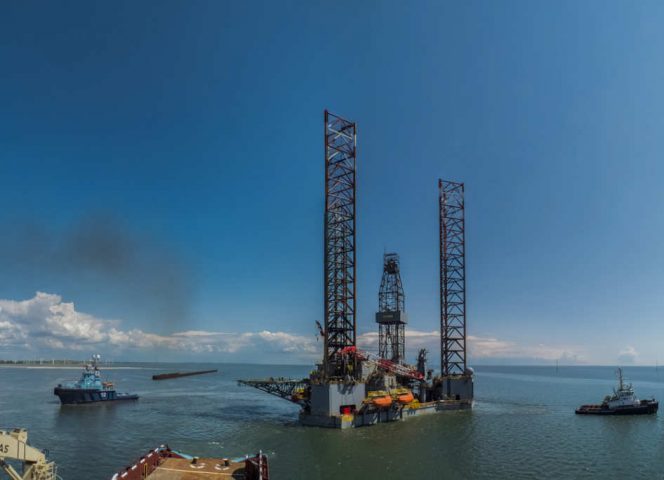Bassoe Analytics’ offshore rig market survey shows optimism is back

[ad_1]
Survey respondents think drilling rig demand will increase and the harsh environment semi-sub market is undersupplied, but peak oil demand is a growing concern.
By: David Carter Shinn, Bassoe Offshore

We’d like to thank the nearly 300 offshore oil and gas industry professionals who answered one or more of our 2019 rig market survey questions.
So, let’s go through the results.
Compared to one year ago, how optimistic are you about demand for offshore drilling rigs over the next two years?
Over 90% of respondents are equally or more optimistic about the outlook for offshore drilling rig demand for the next two years compared to one year ago.

Pretend you’re starting a new offshore drilling company and can choose one type of rig to start your fleet with (assume funding is not an issue). Which would it be?
When it comes to preferred types of drilling rigs, harsh environment semi-subs are preferred by over 50% of respondents. This supports the strong outlook for the sector. Premium jack-ups came in second place (over 22%).

Do you think more harsh environment semi-sub newbuilds are needed within the next five years or is the market sufficiently supplied?
Over 60% think that there’s a need for more newbuild harsh environment semi-subs as the market may be undersupplied over the next five years.

Assuming 5-year project economics are similar, would you upgrade and reactivate an old rig or build a new one?
When asked if they would rather upgrade an old rig or build a new one (assuming 5-year project economics were similar), over 40% would still choose to upgrade. Although the majority would prefer to build a new rig, the large proportion of “upgraders” indicates that uncertainty in the industry’s long-term outlook remains.

A semi-sub in Norway can currently expect dayrates of around $300,000 for new fixtures. Where do you see leading dayrates for new semi-sub fixtures in Norway in one year (assume drilling start in 2020)?
Nearly 60% of respondents think dayrates for harsh environment semi-subs will be in the $350,000–400,000 range in one year. And over 30% don’t even think they’ll make it to $350,000.

6th and 7th generation drillships can currently expect dayrates in the $150,000-$200,000 range for new fixtures. Where do you see leading dayrates for new ultra-deepwater rig fixtures in one year (assume drilling start in 2020)?
For ultra-deepwater drillships, 45% think dayrates will be in the $250,000–300,000 range in one year while over 40% think they’ll still be under $250,000.

Benign environment premium (modern) jackups can currently expect dayrates in the $70,000-$100,000 range for new fixtures. Where do you see leading dayrates for new jackup fixtures in one year (assume drilling start in 2020)?
For benign environment jackups, over 60% see dayrates in the $100,000–150,000 range in one year. And over 30% still think average dayrates won’t exceed $100,000.

Even with the overwhelming optimism for offshore drilling rig demand, respondents’ outlook on dayrates shows that optimism is likely based on a continued gradual improvement in market conditions.
Do you believe peak oil demand is a risk to offshore drilling before 2040?
Lastly, we asked if respondents thought that peak oil demand was a risk to offshore drilling before 2040. Interestingly, this was split nearly 50–50, with a slight edge to respondents who don’t think it’s a risk.

This shows, as does the question about upgrading old rigs vs. building new ones, that a significant number of respondents are cautious, and perhaps uncertain, about where the offshore oil and gas industry will be in twenty years.
The pressure on the industry from the growing focus on the environmental impact of fossil fuels will continue (rightly so). Although nobody knows how long oil’s future will last, one thing that’s certain is that new technology to make drilling cleaner, safer, and more efficient will only become more important as time goes on.
But for the near-term (5 years), we see the optimism reflected in the survey responses continuing to strengthen as the industry experiences higher rig utilization, higher dayrates, and increasing asset values.
We’re seeing surging activity in places like Mexico, Southeast Asia, and West Africa. Add that to the North Sea and Middle East, which have been outperforming the rest of the world (with respect to contract awards), and you’ve got a market which has a lot of reasons to be optimistic.
Offshore Energy Today has shared the article above with permission from the author. You can read the original post at Bassoe.no.
The views and opinions expressed in this article are those of the author and do not necessarily reflect the official policy or position of Offshore Energy Today.
Spotted a typo? Have something more to add to the story? Maybe a nice photo? Contact our editorial team via email.
Offshore Energy Today, established in 2010, is read by over 10,000 industry professionals daily. We had nearly 9 million page views in 2018, with 2.4 million new users. This makes us one of the world’s most attractive online platforms in the space of offshore oil and gas and allows our partners to get maximum exposure for their online campaigns.
If you’re interested in showcasing your company, product or technology on Offshore Energy Today contact our marketing manager Mirza Duran for advertising options.
Source link







